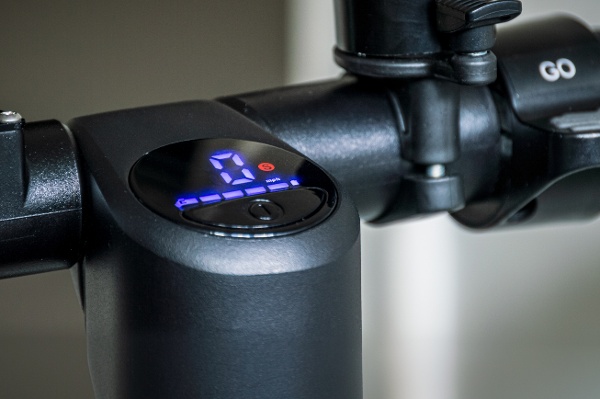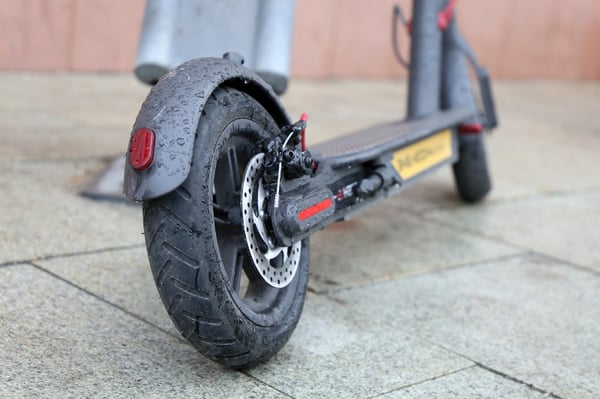Winter is coming indeed; temperatures are dropping, and the days are getting darker and wetter. It has definitely gotten difficult to ride an e-scooter in the current weather conditions, but it doesn't necessarily have to be that way!
We have some critical tips and tricks regarding the usage of e-scooters in the winter season, and we're here to share them with you throughout this article!
Preparing your e-scooter battery for the winter
When it comes to taking care of your e-scooter battery during cold weather, it's good to keep in mind the following:
-
Cold temperatures (especially sub-zero) will certainly have an impact on the performance of your battery, meaning you will get a lower range from your device, ultimately resulting in a lower distance from a single charge. Don’t worry, it is not permanent though – your e-scooter range will get back to normal once the temperatures increase back to over 20°C!
-
We know it rarely gets under -20°C in Belgium, but make sure you do not store your device in these temperatures. You may have difficulties charging the battery or even turning the device on if the body temperature is so low.
-
An important tip: even if you give up and decide not to use your device in the winter – make sure you store it while charged (not with an empty battery) and regularly charge it once every 2 months. Your battery will discharge slowly even if you do not use your device and if it goes below a certain percentage, it may become unresponsive and not turn on, and you may have to kick-start it afterward.
If your device does shut down on you – don't panic!
We're here to revive your battery if required, and we'll even pick up your device from your choice of address!
 A repair shop (like Cyclecure) can resuscitate your battery. Clear!
A repair shop (like Cyclecure) can resuscitate your battery. Clear!
Preparing the e-scooter tires for cold weather
The tires of your e-scooter also require special care:
-
Regardless of the temperature, make sure you always pump air in your tires, at the right pressure defined in your manual (typically around 35-50 psi or 2.5-3.5 bar)
-
Air tires certainly have the advantage of not going flat, yet in contrast with solid (rubber) tires, they are much more preferable in wet terrains. Air tires will not only absorb the impacts from the road better but also provide better traction and grip on a rainy day.
-
Similarly, if your outer tire treads are worn out, the chances of slipping on the road will significantly increase. In case the treads become invisible (flat), make sure you replace your tire with a new one.
Protecting your e-scooter from rain and snow
Rain is not the biggest friend of your innocent e-scooter. Most commercial e-steps have a low water-proof IP rating which measures how well your device components are protected from water and other foreign bodies.
For instance, for a rating IP54, the second digit corresponds to the protection against liquids, and 4 means “Protected against water splashed from all directions, limited ingress permitted”.
In easier terms, your scooter will be fine with light rain and small splashes of water, but you should avoid riding it across puddles deeper than 2 cm.
In addition to not riding through puddles, there are simple tricks that can help you protect the expensive components of your device:
-
Your screen (dashboard) is a simple circuit board and is quite sensitive to water. Many devices have good screen isolation against water leakage, but water drops can get in through the power button, so it is always recommended to use a silicone cover to protect your screen.
 Ideally, your dashboard should be protected.
Ideally, your dashboard should be protected.
-
After you use your device in the rain, it is also important to dry certain parts to avoid leakage. One major example is that when you fold your steering column (front pole) while it is wet, the water on your pole can route directly into your screen and you don’t want that! You can dry the column or wait until it dries itself before you fold it.
-
As we discussed earlier, the battery is the most expensive part of your device and it is the piece of equipment that likes the water the least. Symptoms for water leakage in your battery: it may not turn on at all, turn off automatically while riding, or not charge above a certain percentage. If you have any of these issues, you have the right to get suspicious about a battery problem.
 Wiping your e-scooter after rain should become a habit. Do it!
Wiping your e-scooter after rain should become a habit. Do it!
Dealing with reduced visibility on your e-scooter
Last but not least, you should protect yourself from the rain, cold -- and dark -- too.
As the days are getting shorter, you may end up riding your device in the dark, both morning and evening. It is always recommended that you turn your front and rear LED lights on. If your device has an app, there is a good chance you can use the setting to keep your rear light ‘always on’.
In addition to the lights on your device, you can wear a helmet with LED lights and a luminous vest (or anything with reflective stripes), so that others, especially other vehicles, can see you in the traffic or on the bike lane. Waterproof pants and jackets are nice to have too if you don’t want to end up sitting at your office desk with completely wet pants.
This winter season, ride responsibly to ensure you and everyone around you are safe on the road. Riding an e-scooter can be as simple as pushing a button, but riding safely is your responsibility!
Make sure your e-scooter is safe to use for this winter season.
Book a tuning appointment now

January 25, 2024
